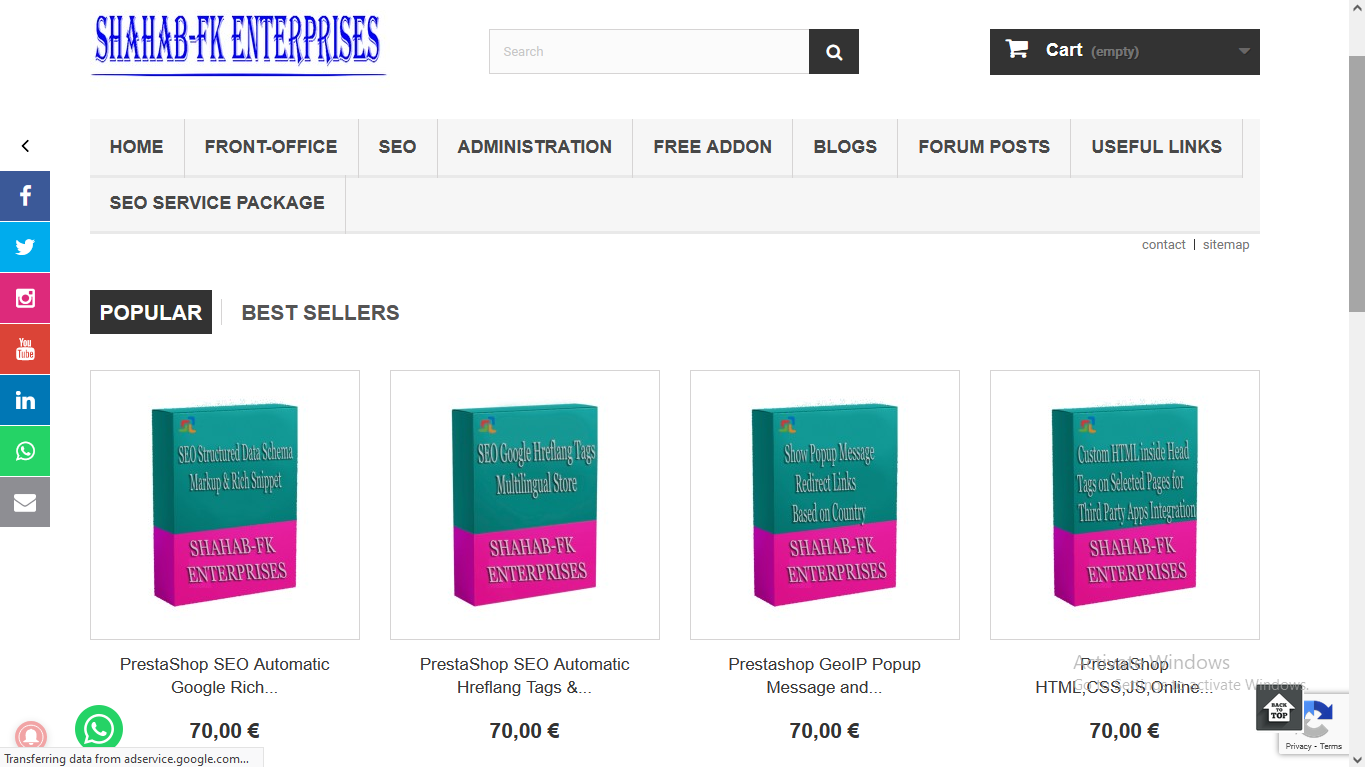WooCommerce and PrestaShop are both popular e-commerce platforms, but they have different underlying architectures and cater to different types of users. Here’s a comparison of WooCommerce and PrestaShop:
- Platform Type:
- WooCommerce:
- Type: WordPress plugin.
- Integration: Fully integrates with WordPress, turning your WordPress site into a functional e-commerce store.
- User Base: Ideal for users who already have a WordPress website and want to add e-commerce functionality.
- PrestaShop:
- Type: Standalone open-source e-commerce platform.
- Integration: Requires a separate installation from a WordPress site.
- User Base: Suitable for users who want a dedicated e-commerce solution and may not necessarily use WordPress.
- WooCommerce:
- Ease of Use:
- WooCommerce:
- Pros: Very user-friendly, especially for those familiar with WordPress.
- Cons: The simplicity may come at the expense of some advanced features.
- PrestaShop:
- Pros: User-friendly, especially for those accustomed to standalone e-commerce platforms.
- Cons: The learning curve might be steeper for absolute beginners.
- WooCommerce:
- Customization:
- WooCommerce:
- Pros: Highly customizable with a wide range of plugins and themes.
- Cons: Some advanced features may require additional plugins, potentially impacting performance.
- PrestaShop:
- Pros: Offers a good level of customization with a variety of themes and modules.
- Cons: While customizable, it may not be as flexible as WooCommerce for users already invested in the WordPress ecosystem.
- WooCommerce:
- Scalability:
- WooCommerce:
- Pros: Scales well for small to medium-sized businesses, but may face challenges with extremely large stores.
- Cons: Performance can be an issue with very large catalogs or high traffic.
- PrestaShop:
- Pros: Scales well for small to medium-sized businesses and has features for larger stores.
- Cons: Like any platform, very large stores may require careful optimization.
- WooCommerce:
- Community and Support:
- WooCommerce:
- Pros: Large community due to its association with WordPress. Extensive documentation and forums are available.
- Cons: Official support is limited unless you purchase additional services.
- PrestaShop:
- Pros: Active community with forums and extensive documentation.
- Cons: Official support may also require additional fees.
- WooCommerce:
- Cost:
- WooCommerce:
- Pros: Free to use, but you may incur costs for plugins, themes, and additional features.
- Cons: Some advanced features may require premium plugins.
- PrestaShop:
- Pros: Free and open-source, but there are costs for hosting, themes, and premium modules.
- Cons: Like WooCommerce, additional features may come with extra costs.
- WooCommerce:
In summary, the choice between WooCommerce and PrestaShop depends on your existing platform (WordPress or standalone), your familiarity with the respective systems, and your specific e-commerce requirements. If you are using WordPress and want seamless integration, WooCommerce is often a natural choice. If you prefer a standalone e-commerce platform with its own ecosystem, PrestaShop might be a better fit.
Post Views: 626

